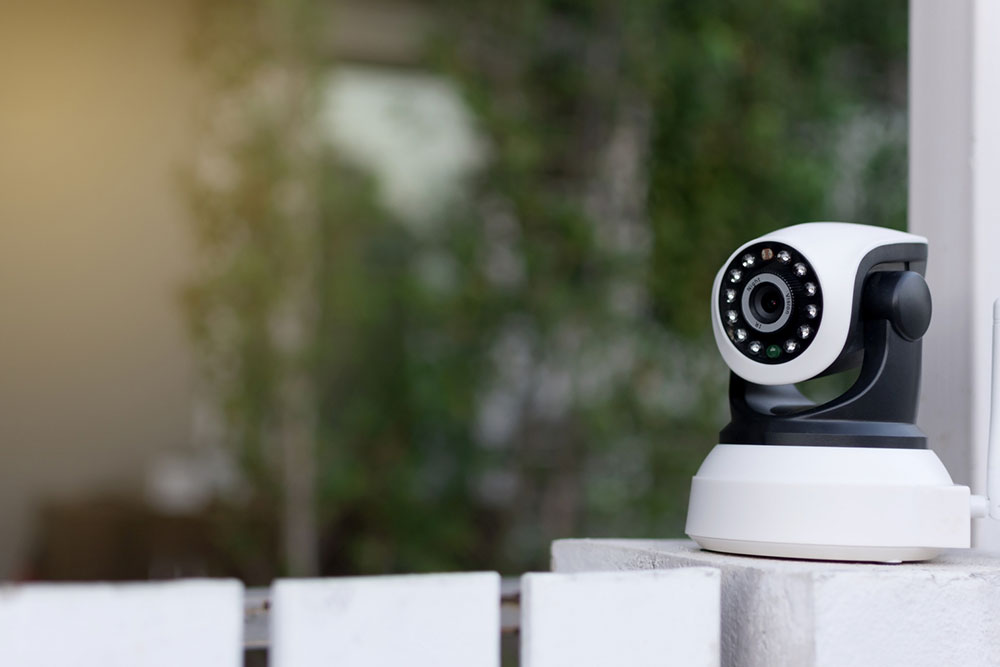6 spots to avoid while installing home security cameras

The key to getting the most out of home security cameras is strategically placing them. This way, one can actively monitor the entry and exit points around the home. However, choosing the right spot is not easy, and one misplaced camera can render the security system futile due to poor footage. To avoid such unfortunate incidents, it helps to be aware of the worst spots to avoid while installing home security cameras.
Six spots to avoid while installing home security cameras
A spot that faces the neighbor’s house or yard
This is a common mistake many people end up committing while installing their home security camera systems. They place a camera in a spot that gives a complete view of the neighbor’s property, including their house and yard. This will not only prove to be of no use when securing one’s own house but will also lead to conflict with the neighbors due to an invasion of their privacy. This can cause legal problems since it might be considered unlawful surveillance. Also, since the camera is focused on a point outside one’s property, it won’t be useful in preventing any breach or break-in. With the lens focused on outside the property, a blind spot would be obvious to an intruder looking to gain entry into the house.
Hidden or obscure spots along the property
It may seem like a good idea to place cameras at spots that are not easily visible to everyone. Many homeowners follow this strategy, assuming burglars and intruders look for such spots to break into the property. But this does not happen in most cases. Often, intruders try to get into a home through entry points that are plainly visible to avoid causing alarm or raising suspicion from potential witnesses. Therefore, placing the cameras in easily visible spots such as side alleys, front doors, or facing the front yard is better. Placing the cameras at these spots will provide easy visibility to the obvious entry points around the property. These cameras can easily and clearly record footage of who is coming in and out and what they are doing.
Spots that have obstructions
While shortlisting the posts around the property to place the home security cameras, it is important to check the space that will surround the camera lens. The camera will be unable to do its job if the lens is blocked by foliage or another object. The obstruction may hide the face of the intruder or what they are doing.
For instance, one may want to place a camera on a lamppost behind a tree in the yard. While this post may be effective in hiding the camera from the intruder, the foliage and branches of the tree may also block the view of the camera. It is important to remember that the goal of placing home security cameras is to have deterrents against unlawful break-ins. Therefore, it is crucial that these cameras are placed in distinct, unobstructed spots that can safeguard the property against anyone intruding or invading in.
Spots that intrude on the residents’ privacy
Apart from maintaining the safety of a property, home security cameras are sometimes used to keep an eye on people inside the home. While this is usually done with safety in mind, it can invariably intrude on their privacy too. Hence, it is crucial to install cameras at spots that do not intrude on another’s privacy. For instance, avoid placing the cameras in bathrooms, bedrooms, and other spaces where privacy is required. Not taking care of this may lead to an uncomfortable situation or legal problems. If one wants to keep an eye on toddlers or seniors at home, baby monitors and senior medical alert systems are better options compared to security cameras.
Along the roofline of the house
Placing cameras along the roofline of the house will restrict the view of the property, resulting in the possibility of no useful footage. If the cameras on the roof do end up recording anything, the video quality will be quite poor since the roof is at an immense height. It may not be possible to make out the face or even the body type of the intruder or figure out their actions clearly. Thus, cameras placed on the roofline will not serve the purpose of surveillance and monitoring.
Spots that provide a view of only the house and not the surrounding areas
Whether a house is small or large, it is important to place cameras at spots that will give a view of the entire perimeter of the property, including the front yard, backyards, and the approach road. Placing cameras at spots that only point toward the house will not ensure enough security and safety. When the cameras are installed in spots that offer a view of all the possible entry and exit points, one has enough time to take action when they get notified that someone has entered their property. One can call emergency services or raise an alarm and call for help.
While one can install a home security system by themselves, consulting a professional team may help in understanding which spots can guarantee easy visibility and optimum usage of security cameras. These will, in turn, offer increased security to one and ensure the peace of mind of the persons living in the home.







